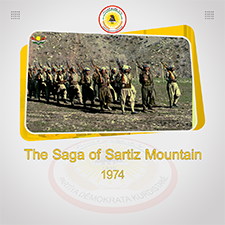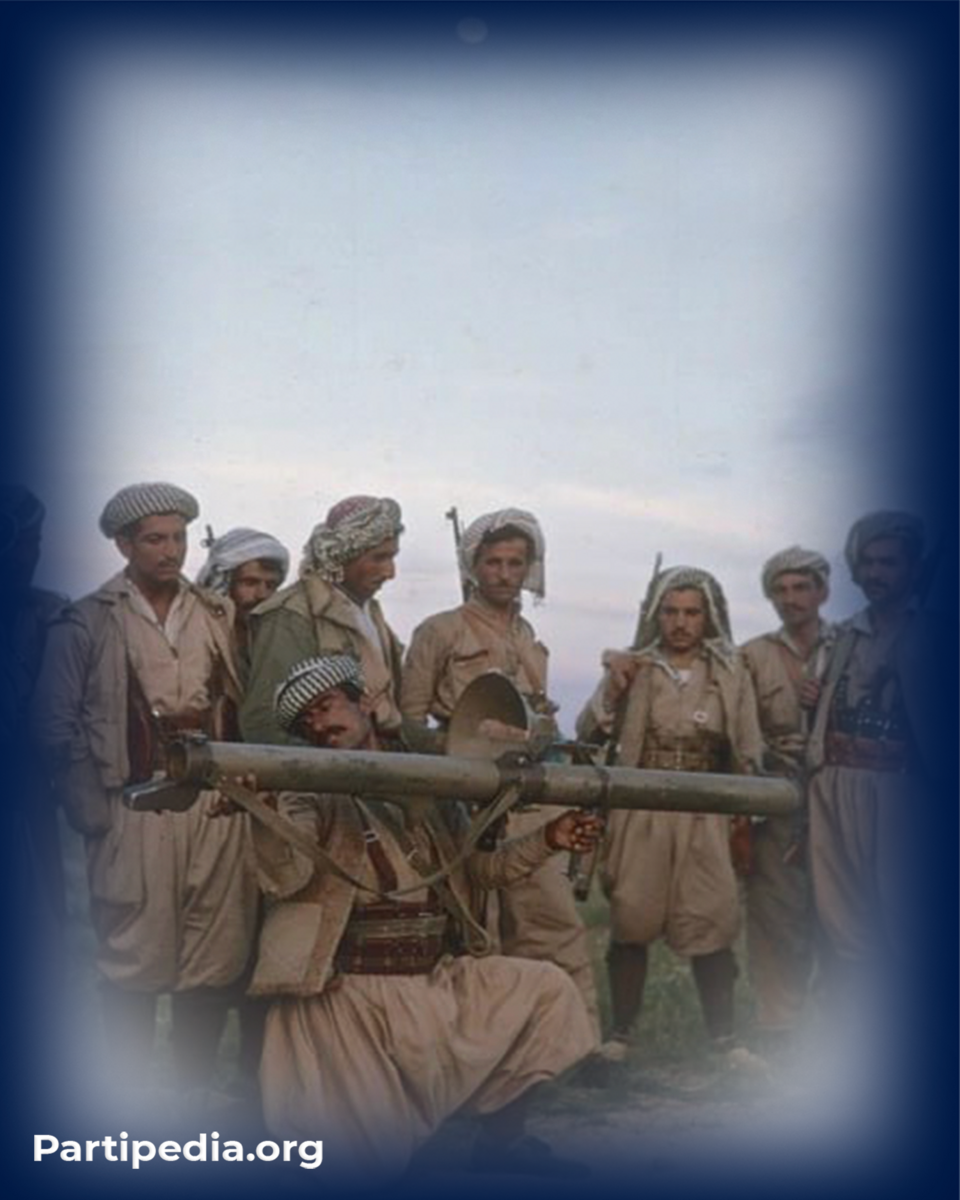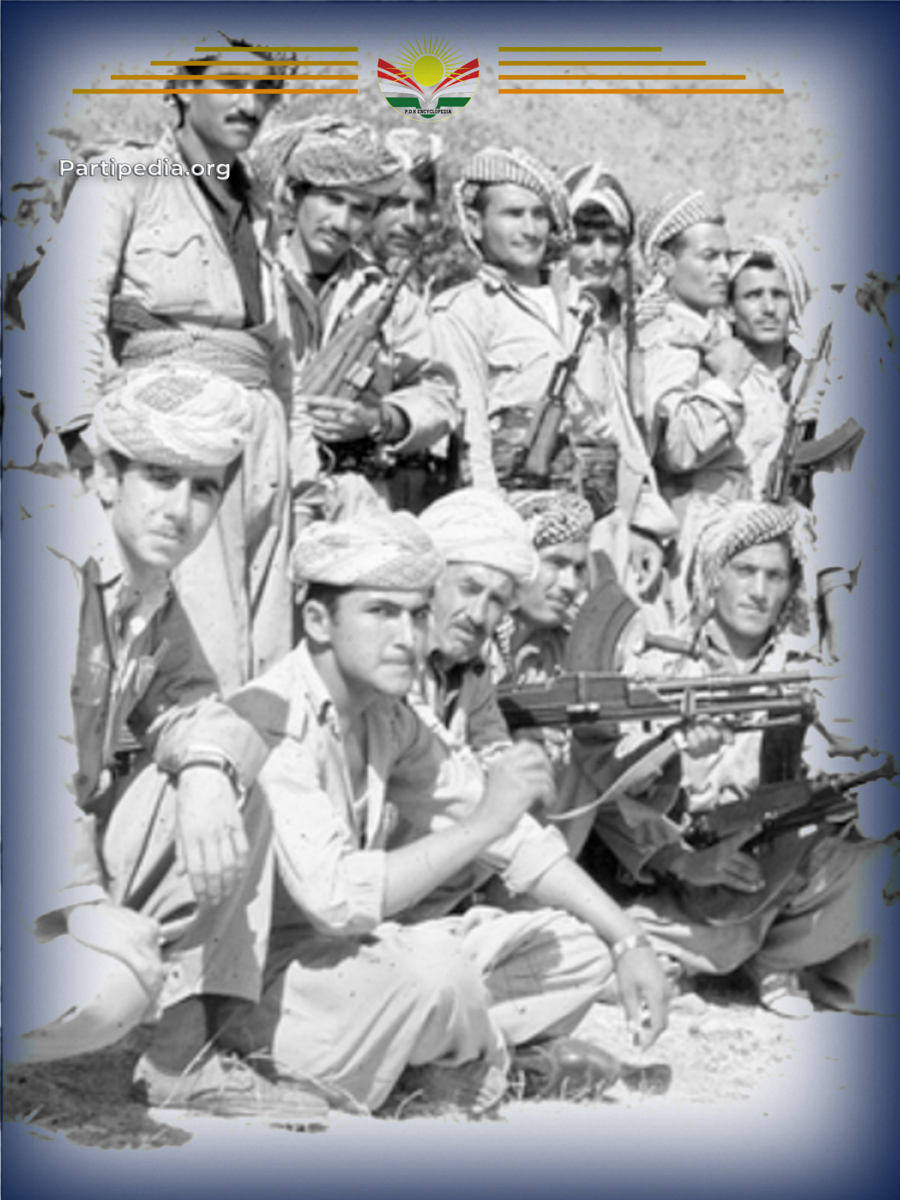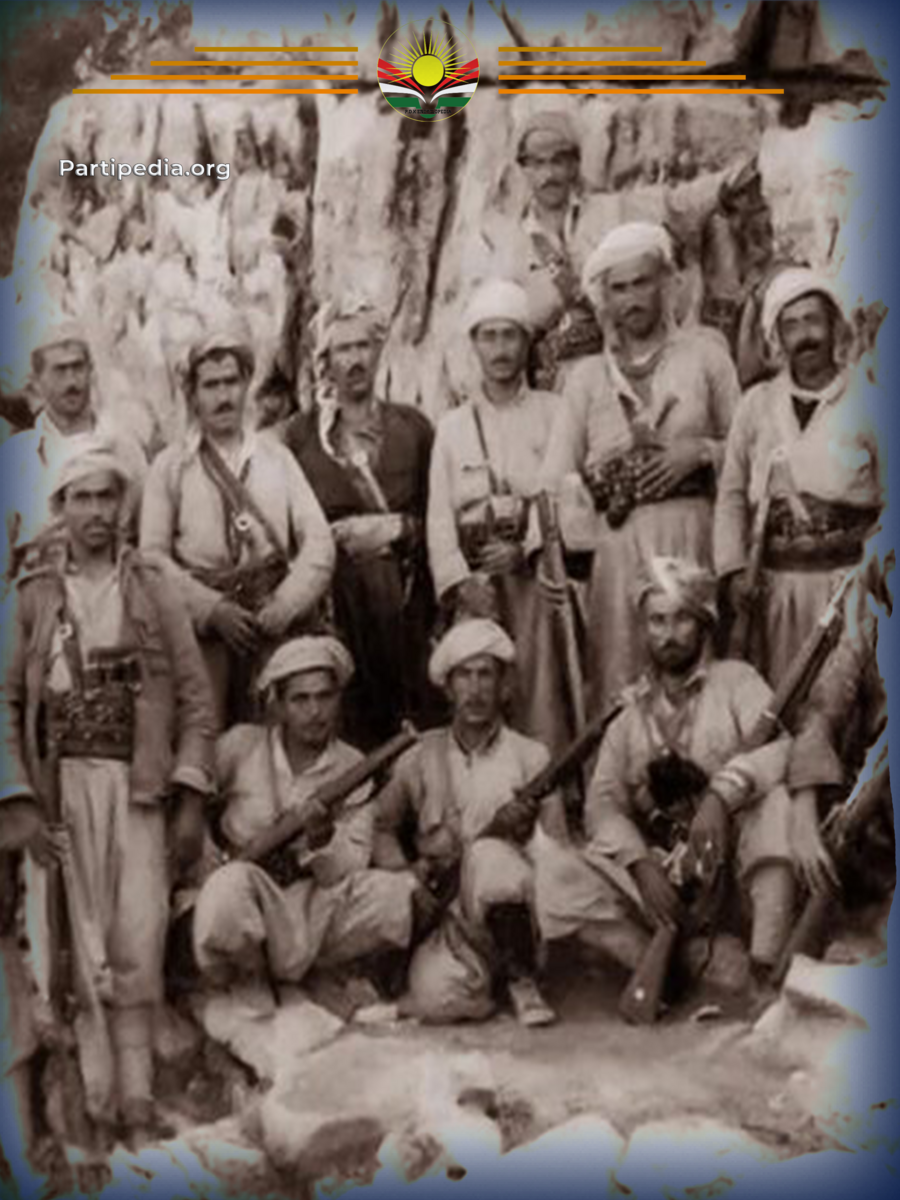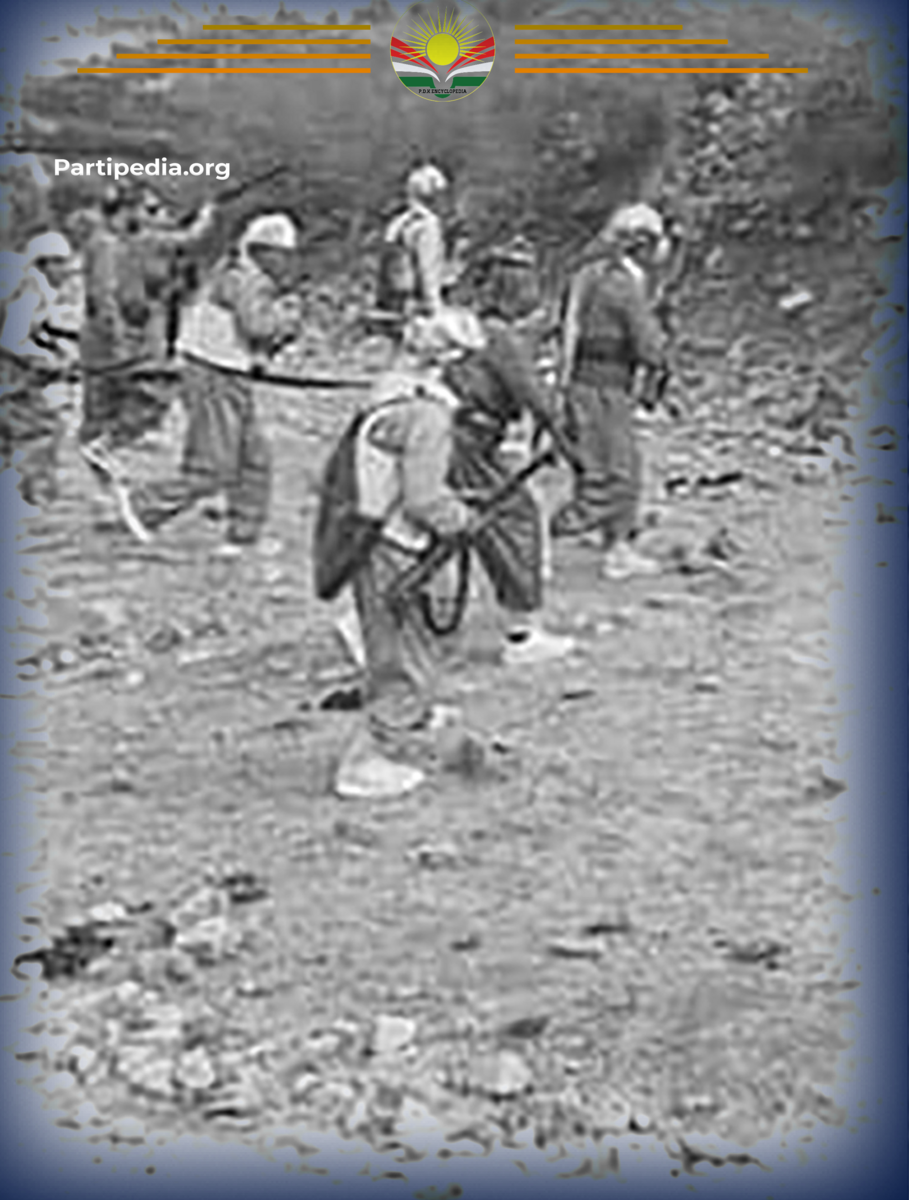This mountain range served as a strategic road, facilitating the passage through the Besh Gorge. Its significance lay in its function as a vital gateway that connected the Bradost and Barzan territories to the Balakaity territory, which served as the headquarters of the revolutionary leadership. However, the Iraqi army relentlessly attempted to capture the mountain, as its possession would severely impede all the movements of the revolution and isolate the territories under the control of the revolution from one another, thus cutting off all communication channels.
Sartiz Mountain can be found north of Zozk Mountain and south of Hassan Beg Mountain. It towers over the surrounding landscape with an elevation of approximately 1850 meters above sea level. This mountain is also known as (Mount Tatan) on the Iraqi military map and offers views of the Besha Strait to the north. The leadership of the September Revolution recognized the strategic importance of Sartiz Mountain and took measures to safeguard it from falling into the hands of the Iraqi army. The Besha Strait, an essential thoroughfare, connected the Bradost and Barzan territories to the Balakaity territory, which served as the hub of revolutionary leadership.
During the onset of the September Revolution, precisely on May 29, 1962, Mullah Mustafa Barzani, the prominent Kurdish revolution leader, along with more than 500 Peshmergas, made their way to Besha village for the very first time. The villagers extended a heartfelt welcome to them, and they spent two nights in the village. Later, they proceeded to spend the night in the beautiful Besha Gorge before venturing into other parts of the Balakaity territory.
In 1974, after the Iraqi army had gained control over the slopes of Mount Korrek, various areas, including Ruandz, Diyana Plain, and Badlian, were at risk of being occupied. In response, the Revolutionary Military Bureau issued a directive for forces such as Halgurd, Zmanako, Zakho, Kaveh, Safin, and Azmr to dispatch a battalion to Sartiz Mountain. The objective was to fortify the Peshmerga's positions at strategic heights by establishing a line of defence to mitigate the threat to the revolutionary leadership and other locations. Finally, in August of that year, the forces arrived at the designated location.
When the Iraqi army succeeded in capturing Mount Zozk, it began preparing to capture Mount Sartiz. Its advances reached the village of Sitkan at the foot of the mountain. The Peshmergas on the mount Sartiz, who were in the defensive position, told the commanders of the front that the Iraqi army was advancing towards their positions. Upon receiving the news, the Peshmerga commanders gathered in Besha village to develop a plan to prevent the advance of the Iraqi army. To this end, Hamida Fandi, as commander of the infantry, and Omar Osman, as commander of the revolutionary artillery, were ordered to attack the Iraqi army to defeat their advances and expel them from the area.
The saga surrounding Mount Sartiz began with the revolutionary artillery's shelling of the Iraqi army. In response, the Iraqi military took action by intensively bombing the Omaragha Gorge, located in the southwest of Sartiz Mountain. It was on October 7, 1974, that the Iraqi government initiated their plan to attack the peak of Mount Sartizi. The attack commenced with a heavy bombardment of the entire mountain, utilizing army artillery and weapons (Grad), as well as air force planes armed with napalm and phosphorus bombs. The result was the complete burning of the entire mountain, which allowed the Iraqi army to successfully take control of the area.
Following a week-long break and careful preparation, the Kurdistan Peshmerga forces launched a counterattack against the Iraqi army. The operation was carried out by a battalion of Khabat forces under the command of Hama Shamirani and a battalion of Zmanako forces under the command of Nuri Hama Ali. The Peshmerga forces were able to capture the entire mountain and inflict heavy damage on the Iraqi military. The Iraqi army suffered over 200 casualties and a significant number of wounded, while the Peshmerga forces only had one martyr and six wounded soldiers.
The following day, the Iraqi army launched a counterattack and managed to recapture the mountain after two months of fierce fighting on Mount Sartiz. This mountain held four strategically important military positions, making it a highly contested area. The control of the mountain kept switching between the Peshmerga forces and the Iraqi army. However, due to the imbalance in military strength, weapons, and supplies, the Peshmerga forces eventually decided to withdraw from the mountain.
Following the withdrawal of the Peshmerga from Sartiz Mountain, a letter was received by the commander of the Peshmerga forces on the front line from the Revolutionary Military Bureau. The letter called for a counterattack to be carried out with the aim of capturing the four strategic points where the Iraqi government army soldiers were stationed. This directive was issued three days after the Peshmerga had withdrawn from the area.
On November 15, 1974, a coordinated attack was carried out by more than 200 Peshmergas from various battalions, including Halgurd, Balak and Azmr. Led by Hamidafandi, the Peshmergas were well-prepared and determined to carry out the orders of the leadership. The operation commenced at precisely 17:00, with heavy shelling of the Iraqi army by revolutionary artillery. The attack continued for a duration of approximately one hour and thirty minutes, during which the Kurdistan Peshmerga Forces launched a comprehensive military strategy to take back Sartiz Mountain. The Peshmergas were able to reclaim the mountain within just half an hour, causing heavy damage to the Iraqi army and inflicting many casualties, including both killed and wounded soldiers. In addition to the human cost, the Peshmerga also seized a substantial amount of weaponry, including 45 Kalashnikovs, 140 grenades, seven pistols, two wireless devices, 38 light guns and four gun machines.
Sartiz Mountain held immense significance for the Iraqi army, as they were determined to retain control over it despite facing repeated defeats at the hands of the Kurdistan Peshmerga Forces. On the 16th of November, 1974, the Iraqi army launched another attack on the four crucial locations with a special battalion. Although they were successful in regaining control over these areas, the Peshmerga forces swiftly counterattacked at sunset on the 20th of November, 1974, and recaptured the positions.
Unfortunately, the Peshmergas were unable to sustain the resistance due to fatigue, the relentless attacks launched by the Iraqi army, and the constant shelling. Consequently, they were forced to vacate the positions that very night, and the Iraqi military promptly returned to take back Sartiz Mountain.
During the various assaults launched by the Iraqi army on Mount Sartiz, the ascent to the mountain was carried out from the nearby village of Sitkan. Additionally, a support force machine gun was strategically positioned on a northern peak of Mount Zozk, known as Kharomar, which aided the Peshmerga operations taking place on Mount Sartiz.
The retention of the pinnacle of Sartiz Mountain in the hands of the Kurdistan Peshmerga Forces held a paramount significance. A message had been transmitted to the commanders of the battle division from Barzani's headquarters, stressing the importance of Sartiz Mountain being under the possession of the Peshmerga. In the letter, it was explicitly mentioned that the Halgurd forces must seize control of the mountain, and subsequently, the battalion of Sayed Abush of the Zakho forces should be deployed in their place. In order to execute the commands of Barzani's headquarters, both Halgurd and Azmr forces launched an attack on the apex of the mountain and, within a short span of time, successfully evacuated the positions from the Iraqi army and the jash mercenaries. They recaptured the strategic locations at the summit of Mount Sartiz, thereby regaining control of it and deploying the battalion of Sayyid Abush in the designated area, as per the instructions in the letter.
This time, however, the Iraqi army was so defeated and broken by the Peshmerga force's continuous attacks that it had only one way left to take revenge on the Peshmerga forces for all the losses they had suffered. It was Heavy shelling on Peshmerga positions on Sartiz Mountain. As a result of this shelling, the Peshmerga forces suffered heavy damage. These included (18) Peshmergas martyred, (14) wounded in the Halgurd force, (11) martyred and, (4) wounded in the Zakho force, one martyr, and (2) wounded in the Zmanako force.
Following numerous setbacks in this particular theatre of the war, alongside the onset of the cold season characterized by winter frost and snowfall, the Iraqi army had been considerably weakened. Lacking the necessary fortitude to mount a counteroffensive against the Peshmerga, they were unable to reclaim Mount Sartiz.
Resources:
-
مهسعود بارزانی، بارزانی و بزووتنهوهی ڕزگاری خوازی كورد، شۆڕشی ئهیلوول 1961-1975، بهرگی سێیهم، بهشی دووهم.
-
سهنگهر ئيبراهيم خۆشناو، رِووداوه سهربازيهكانى شۆرشى ئهيلوول 1970-1975 ، چاپي يهكهم، ههوليَر.
-
غازی عادل گهردی، پێشمهرگهیهك له خزمهت بارزانیدا ... حهجی بێڕۆخی، بهرگی یهكهم، چاپی دووهم، 2020.
-
ئيسماعيل گوندهژۆرى، شۆرِشى ئهيلوول له بالهكايهتى، چاپخانهى رِۆژههڵات، 2018.
-
دیمانه: گۆرگیس یهلدا تهرخان، پێشمهرگهی شۆرشی ئهیلوول، ئهرشیفی ئینسكلۆپیدیا.
-
دیمانه، قادر حسن سیتكانی، پیشمهرگهی شۆرشی ئهیلوول، 31/12/2022.




